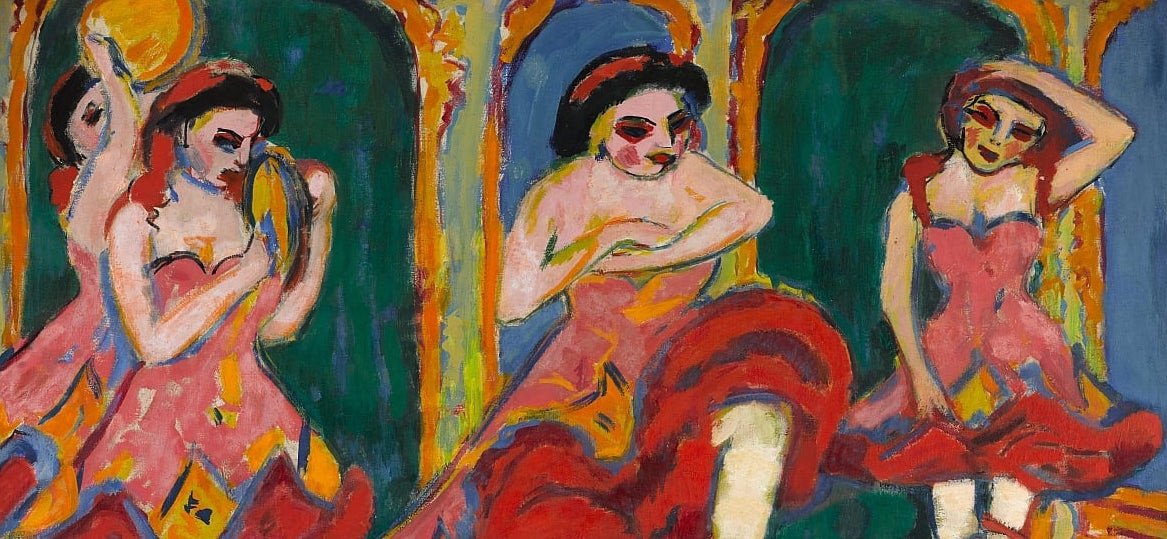
(Kirchner, 1908)
Lesson 4 - Project production
Duration: 90 minutes
Learning objectives and measures for success:
For students to:
Commence or continue the production of their portrait artworks – complete by the end of the lesson
Demonstrate their knowledge by successfully applying Expressionism techniques/processes
Communicate the identity of their sitter through applying elements of portrayal
Focus code/convention/media form/skill/technique:
Application of Expressionism techniques and processes
Focus on artwork production processes
Exploring representation to communicate the identity of their sitter
Use of painting materials
Resources required:
Digital display or projector
Computers
Writing utensils (if required)
40.6cm x 30.5cm canvas’
Painting equipment (as mentioned in lesson 2)
Lesson Structure:
Action 1: Class introduction – 5 minutes
Have class discussions with students about their progress towards their Expressionism Portraiture – review and monitor progress to understand what step of production each student is up to and who needs further support.
Action 2: Studio time: Production – 75 minutes
Studio time is provided for students to complete their Expressionism Portraiture – students are expected to have their portrait finalised at the end of this lesson, ready to commence reflection activity and questions next lesson.
Students should be given access to both lesson 1 (Portraiture) and lesson 2 (Expressionism) slides to review the common themes, elements, and processes, aligning them to the intentions of their work.
Action 3: Pack up – 10 minutes
Clean and pack up all the painting equipment/materials
Wrap up task with students and have final discussion – next lesson will be used to respond to their artworks; encourage students to reflect on their ideas, learnings, and processes between now and next class to gather their understandings of the/their project.
Home Learning:
Students should start to reflect upon their processes and ideas, ready to commence their reflection next lesson.
Teacher actions:
During studio time teachers should be checking in with each individual and their progress/ understanding, giving students some support with direction and execution if they are stuck.
Teachers should focus on highlighting key understandings for the whole class and should speak to each working table group as a whole to facilitate group discussion and learning.
Assessment strategies:
Diagnostic – class discussion, monitoring student production progress
Formative – evidence of techniques and processes- understanding of Portraiture and Expressionism themes and intentions
Summative – satisfactory completion of final work, understandings, and planning, demonstrated by:
Understandings of how artists use Portraiture to convey features of one’s individual, community, or cultural identity
Understanding and applying the elements of portrayal to communicate information or impressions about a subject
Exploration of ideas and concepts behind ‘place’ representation within portraiture
Understanding of Expressionism themes and their significance in communicating meaning, emotion, and themes of identity
Knowledge of Expressionism conventions and practices by successfully applying techniques/processes
Differentiation Strategies:
Extend focus groups tables that intend to have advancing students support those who may be struggling
Leave time open next lesson for those who need more time to complete their works
Required demonstrations of techniques and understandings can be lessened to a basic level, or less complex methods can be suggested for students to portray the identity of their subject
Review expectations for individuals in assessment task depending on progress

